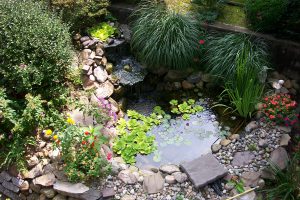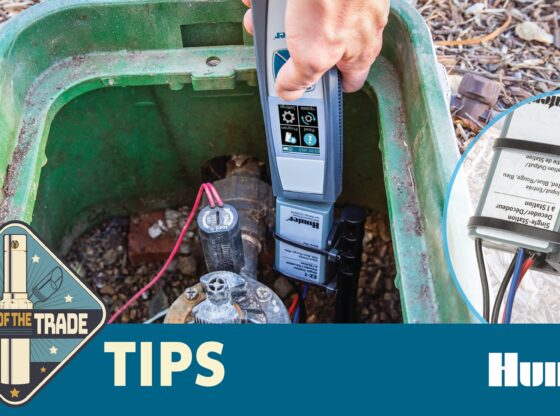Landscaping the inside of a new pond isn’t much different than landscaping a client’s backyard. Similar factors should be considered, with the same design principles applied. Follow these 5 tips for planting your customer’s pond to ensure maximal beauty and minimal maintenance.
1. Make It Natural
When you add aquatic plants to a new pond, you’re helping to blend it in with the surrounding landscape. The goal is to mimic Mother Nature with type and placement of plants. In nature, marginal plants are typically found along the perimeter of ponds, lakes, and streams. In a man-made pond, these plants soften the hard edges of the rocks and provide a smooth transition from the water in the pond to the terrestrial planting area that surrounds it.
2. The Best View
You probably already know that when you build a pond, the waterfall should be located facing the house or viewing areas. Use this same design principle when thinking about aquatic plant placement. Be sure the amazing waterlily or lotus is easily seen from the nearby patio or kitchen window, for the greatest amount of appreciation.
3. Height Matters
To maximize a natural look in the ponds you build, place taller plants like reeds, cattails, and cannas toward the back of planting clusters. Then, add medium and shorter plants on the viewing side of the taller plants.
4. Playing with Colors
Random placement of plants with different textures and colors will give the pond a complete, yet unstructured appearance. Choose colors that your client likes best and let your creativity take care of the rest. It’s always a good idea to emphasize primary colors with larger plants, and complete the look by adding some daring contrasts of texture and other colors around the edge. Play with colors and textures of

foliage, as well, to achieve a lush and inviting look.
5. The Growth Factor
It’s important to familiarize yourself with the mature size and habit of the plants you include in your plans. One of the biggest mistakes made when planting a pond is failing to realize how large some plants will grow or spread. When this mistake is made, the result is an overgrown jungle look that requires much more work to keep plants from taking over the pond. To create a truly low-maintenance pond, be sure you know how large the plants will grow before adding them to the pond, allowing sufficient room for future growth.
Employ these tips when designing and planting your customers’ ponds and you’ll have better success. A pond doesn’t fully mature until about the 3rd year, so don’t be concerned that the pond may look a little sparse at first. Your customers will love watching their water “garden” grow!












